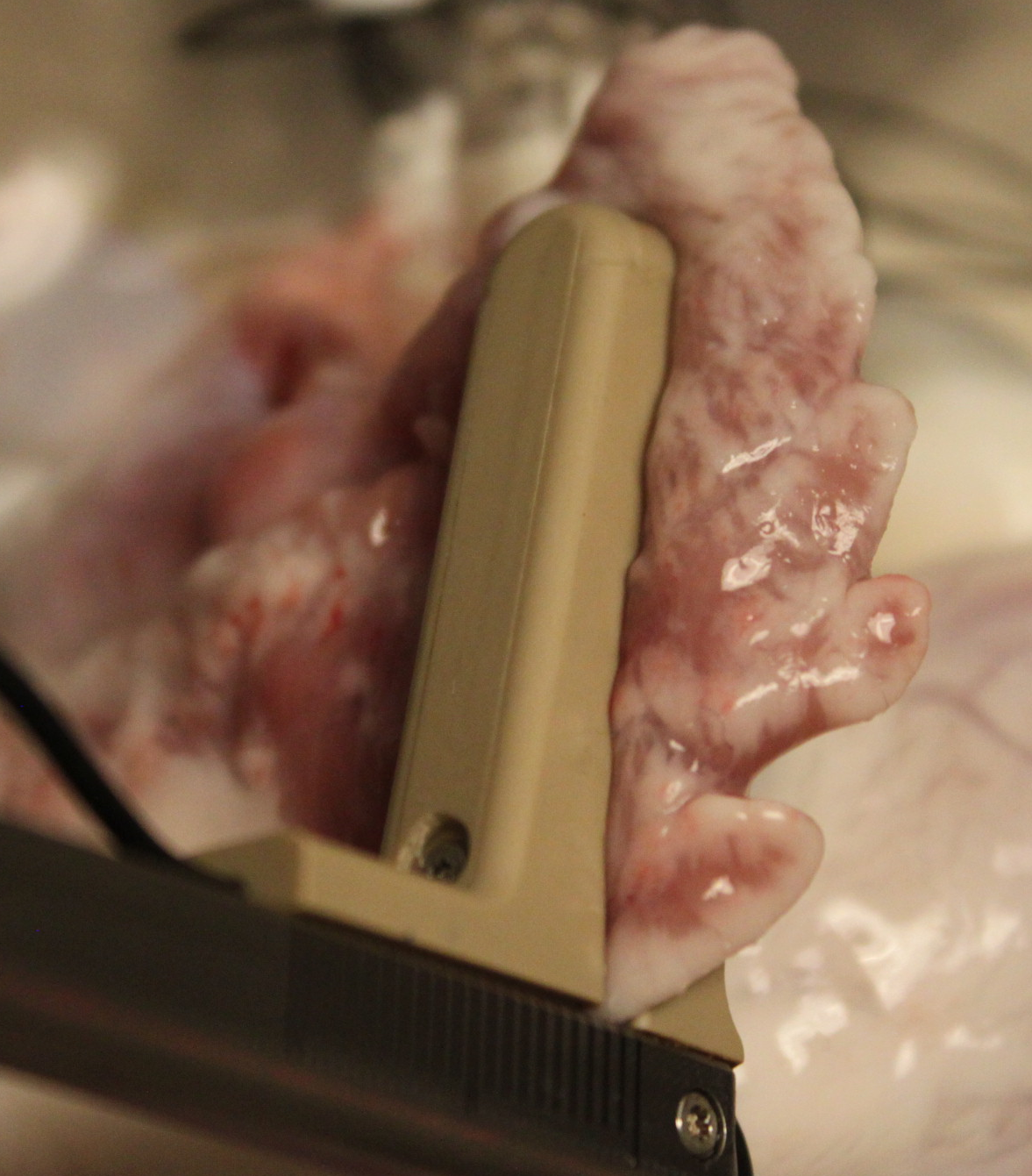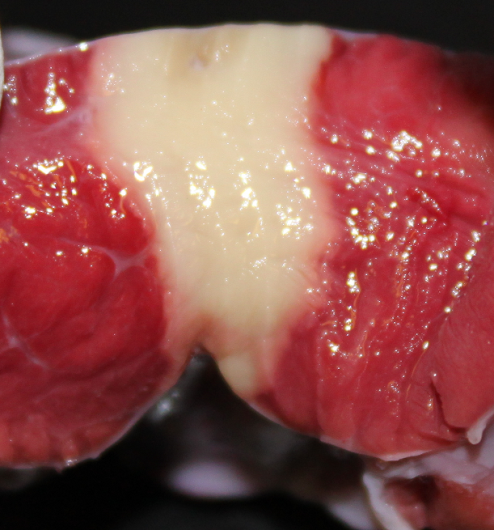Surgical Treatment of Atrial Fibrillation

Atrial fibrillation, the most common arrhythmia, can be treated by separating the areas where the arrhythmia originates (typically the pulmonary veins) from the rest of the heart by means of lesions. The state of the art is to create lesions by burning the tissue with heat or freeze it until it dies, but these approaches have side effects and considerable recurrence. We are working with cardiac surgeons from Sentara Heart Hospital in Norfolk to evaluate and improve different approaches to thermal ablation.

We are also developing an entirely new approach to ablation, using very short (nanosecond) shocks that electroporate tissue. To the left, you see a clamp electrode clamping a left atrial appendage. By applying a short, very intense electric shock between the jaws of the clamp, we can electroporate and therefore ablate (kill) the tissue between the clamps.

The left image shows a cross section through a finished lesion. The tissue stain (TTC) stains life tissue red and ablated tissue white. This lesion was created through the left ventricle of a pig (12 mm thick), a demonstration of how powerful ablation with nanosecond shocks is.
